Tire Inspections and Why they are Needed
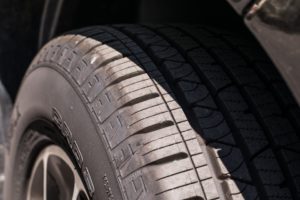 Regular tire inspections are an important part of vehicle maintenance. It helps to ensure optimal performance and safety on the road. By inspecting your car’s tires regularly, you can identify potential issues and address them promptly. Here are three important steps to help you effectively inspect the tires on your car.
Regular tire inspections are an important part of vehicle maintenance. It helps to ensure optimal performance and safety on the road. By inspecting your car’s tires regularly, you can identify potential issues and address them promptly. Here are three important steps to help you effectively inspect the tires on your car.
Tire inspections for any Damage
Make sure to visually examine each tire for signs of damage or wear. Look for cuts, bulges, or cracks on the sidewalls, as these can indicate potential tire failures. Check for uneven wear patterns across the tire surface, which might suggest alignment or suspension problems. Additionally, inspect the tire tread. Adequate tread depth is essential for traction and grip on the road. Use a tread depth gauge or the “penny test” to measure the tread depth. Insert a penny into the tread grooves with Lincoln’s head upside down. If you can see the top of Lincoln’s head, it indicates that the tread is worn, and it’s time to replace the tire.
Then, check the tire pressure regularly. Proper tire inflation is vital for optimal performance, fuel efficiency, and safety. Use a tire pressure gauge to measure the air pressure in each tire. Consult your vehicle’s manual or the sticker on the driver’s side door jamb for the recommended tire pressure. If the pressure is too low, add air until it reaches the proper level. If it’s too high, release air until it matches the recommended pressure. Remember to check the tire pressure when the tires are cold to ensure accurate readings.
Remember, inspect the tire valves and valve stems. Ensure they are in good condition without any cracks or leaks. Faulty valves or stems can lead to slow leaks or sudden tire deflation. If you notice any issues, it’s advisable to have them replaced by a professional.
In addition to regular inspections, tire rotation is essential for even wear and extending tire life. Consider having your tires balanced and aligned periodically to ensure proper handling and a smooth ride.
By following these three steps and conducting regular tire inspections, you can maintain the safety and longevity of your tires. If you notice any abnormalities or are unsure about the condition of your tires, it’s always best to consult a professional for a thorough inspection. Taking care of your tires will contribute to a smoother and safer driving experience.
Air Conditioner and Why it isn’t Cooling
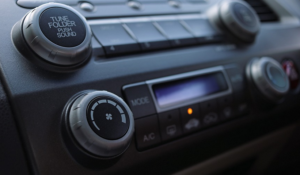 If you’ve noticed that your car’s air conditioner is not working as it should, it may be a sign that something is wrong with the system. Recognizing the signs of a bad air conditioner is important so that you can address the issue promptly and restore your comfort on the road.
If you’ve noticed that your car’s air conditioner is not working as it should, it may be a sign that something is wrong with the system. Recognizing the signs of a bad air conditioner is important so that you can address the issue promptly and restore your comfort on the road.
One of the most obvious signs of a failing air conditioner is when it fails to blow cold air. If you’re adjusting the temperature settings but only warm or hot air is coming out of the vents, it could indicate a problem with the refrigerant levels, compressor, or condenser. This issue requires professional attention to diagnose and repair the underlying problem.
Strange Noises from the Air Conditioner
Unusual noises coming from the air conditioning system are also a clear indication that something is amiss. Grinding, rattling, or squealing sounds could be a sign of a malfunctioning compressor, loose belts, or worn-out components. Ignoring these noises can lead to further damage to the system, so it’s crucial to have them addressed by a qualified technician.
Another sign of a bad air conditioner is a noticeable decrease in airflow. If you’re experiencing weak airflow or reduced ventilation from the vents, it could indicate a blockage in the system, a clogged air filter, or a failing blower motor. In some cases, it may also be a sign of a problem with the electrical components. Having the system inspected and serviced will help identify the root cause and restore proper airflow.
If you encounter any of these signs, it’s important to have your car’s air conditioning system checked by a professional. They have the knowledge and expertise to diagnose and repair the issue, ensuring that your air conditioner operates efficiently and keeps you cool during your drives. Regular maintenance and addressing problems early on can help extend the lifespan of your air conditioning system and prevent costly repairs in the future.
Exhaust System Maintenance for your Vehicle
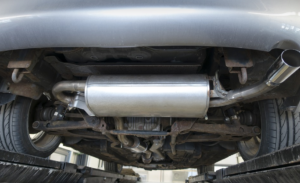 The car exhaust system may not be the most glamorous or attention-grabbing part of a vehicle, but its importance should not be underestimated. This critical component plays a crucial role in the overall performance, efficiency, and environmental impact of a car.
The car exhaust system may not be the most glamorous or attention-grabbing part of a vehicle, but its importance should not be underestimated. This critical component plays a crucial role in the overall performance, efficiency, and environmental impact of a car.
Exhaust system maintenance
One of the primary functions of the car exhaust system is to safely expel the harmful gases generated during the combustion process. As the engine burns fuel, it produces toxic gases like carbon monoxide, nitrogen oxides, and hydrocarbons. The system ensures that these gases are effectively vented out of the vehicle through the tailpipe, preventing them from accumulating inside the cabin and posing a serious health risk to the occupants.
In addition to removing harmful gases, the system helps to reduce engine noise. It is equipped with various components, such as mufflers and resonators, designed to minimize and control the noise produced by the engine. This not only enhances the comfort of the driver and passengers but also ensures compliance with noise regulations in many areas.
Furthermore, the exhaust system plays a vital role in optimizing engine performance. It helps maintain the proper backpressure in the exhaust system, which is crucial for efficient engine operation. The right amount of backpressure allows for the smooth flow of exhaust gases, ensuring optimal airflow and maximizing power output. A malfunctioning exhaust system with improper backpressure can lead to reduced engine performance, decreased fuel efficiency, and potential damage to engine components.
Another important aspect of the system is its contribution to environmental protection. Modern exhaust systems are equipped with catalytic converters, which play a significant role in reducing harmful emissions. These converters use chemical reactions to convert pollutants into less harmful substances before they are released into the atmosphere. By reducing emissions, the exhaust system helps to minimize air pollution and its detrimental effects on both human health and the environment.
The car exhaust system is a vital component that performs multiple essential functions. It ensures the safe removal of harmful gases, reduces engine noise, optimizes engine performance, and helps to minimize environmental impact. Regular maintenance and prompt repairs are crucial to ensure the proper functioning of the exhaust system. By recognizing the importance of a well-maintained exhaust system, we can contribute to a safer and cleaner driving experience for ourselves and future generations.
Windshield Wipers and Signs to Replace them
 Your vehicle’s windshield wipers are an essential component of your safety system, providing clear visibility during rain, snow, and other inclement weather conditions. However, like any other mechanical part, windshield wipers can wear out and fail over time. Recognizing the signs of failing wipers is crucial to ensure your safety on the road.
Your vehicle’s windshield wipers are an essential component of your safety system, providing clear visibility during rain, snow, and other inclement weather conditions. However, like any other mechanical part, windshield wipers can wear out and fail over time. Recognizing the signs of failing wipers is crucial to ensure your safety on the road.
One of the most common signs of failing windshield wipers is streaking. If you notice that your wipers leave streaks or smudges on the windshield even when they are in use, it indicates that the blades are worn or damaged. Streaks can impair your vision and make it difficult to see the road ahead clearly, especially during heavy rainfall.
Issues with the Windshield Wipers
Another sign of failing wipers is skipping or bouncing. When the wiper blades no longer glide smoothly across the windshield and instead skip or bounce, it suggests that the blades have become worn, warped, or damaged. This irregular motion can result in incomplete clearing and leave areas of the windshield dirty or obstructed.
Unusual noises during wiper operation, such as squeaking, scraping, or chattering, are also indicators of failing wipers. These noises often occur when the rubber on the blades has deteriorated or hardened. The friction between the blades and the windshield causes these sounds and can affect the wipers’ effectiveness in clearing away water or debris. Reduced wiping performance is another sign of failing wipers. If your wipers struggle to remove water, snow, or debris from the windshield, it may indicate that the blades have become worn out or no longer make proper contact with the glass. Insufficient wiping can compromise your visibility and increase the risk of accidents.
Other Damage
Additionally, visible damage to the wiper blades, such as cracks, tears, or uneven edges, is a clear indication that they need to be replaced. Exposure to sunlight, extreme temperatures, and harsh weather conditions can cause the rubber to degrade over time, leading to compromised performance.
Recognizing the signs of failing windshield wipers is crucial for your safety on the road. If you observe streaking, skipping, unusual noises, reduced wiping performance, or visible damage, it is time to replace your wiper blades. Regular inspection and maintenance of your wipers will ensure clear visibility and a safer driving experience, especially during adverse weather conditions. Don’t overlook the importance of functioning wipers and address any signs of failure promptly.
Tire inspections for your Vehicle
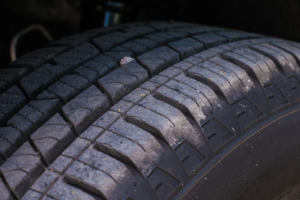 Regular tire inspections are a crucial aspect of vehicle maintenance that should never be overlooked. There are numerous benefits to inspecting your tires regularly, including safety, cost savings, and improved vehicle performance.
Regular tire inspections are a crucial aspect of vehicle maintenance that should never be overlooked. There are numerous benefits to inspecting your tires regularly, including safety, cost savings, and improved vehicle performance.
First and foremost, tire inspections can help ensure the safety of both you and your passengers. A tire blowout or failure can be incredibly dangerous, potentially causing an accident, injury, or even death. Regular inspections can identify any signs of wear and tear or damage, allowing you to address these issues before they become more serious problems. This can include checking for proper tire inflation, examining the tread depth, and looking for any cuts, punctures, or bulges in the tire.
In addition to safety concerns, regular inspections of the tires can also save you money in the long run. By identifying and addressing issues early on, you can avoid more expensive repairs or replacements down the line. For example, underinflated tires can wear out faster, reducing their lifespan and requiring more frequent replacements. By regularly checking and maintaining proper inflation levels, you can extend the life of your tires and avoid the need for premature replacements.
Regular Tire Inspections
Regular tire inspections can also improve your vehicle’s overall performance. Properly inflated and maintained tires can improve your car’s handling, traction, and fuel efficiency. This is because properly inflated tires reduce rolling resistance, which in turn reduces the amount of fuel needed to move your car. Additionally, maintaining good tire pressure can help prevent uneven wear on your tires, which can cause alignment issues and affect your vehicle’s overall performance.
Finally, regular tire inspections can also help you stay in compliance with state and federal regulations. Many states require regular tire inspections as part of their safety inspections, and failure to comply can result in fines or other penalties.
Regular tire inspections are an essential aspect of vehicle maintenance that should not be overlooked. They can help ensure safety, save you money, improve your vehicle’s performance, and keep you in compliance with regulations. By taking the time to inspect your tires regularly, you can ensure that your car is running smoothly and safely on the road.
Shocks and Suspension of Your Vehicle
 The shocks in your car are an essential component that helps provide a smooth and safe ride. When your shocks start to wear out, it can lead to a variety of issues, including decreased handling, increased braking distance, and a rough ride. In this article, we’ll discuss how to tell if the shocks are bad in your car and what you can do about it.
The shocks in your car are an essential component that helps provide a smooth and safe ride. When your shocks start to wear out, it can lead to a variety of issues, including decreased handling, increased braking distance, and a rough ride. In this article, we’ll discuss how to tell if the shocks are bad in your car and what you can do about it.
One of the most obvious signs that they are bad is if you notice excessive bouncing or swaying while driving. If your car is bouncing up and down excessively over bumps, or if it’s swaying back and forth on turns, it’s likely that they are worn out and need to be replaced.
Noticing if the Shocks have Issues
Another way to tell if your shocks are bad is by checking for fluid leaks. They contain hydraulic fluid that helps dampen vibrations and provide a smooth ride. If you notice fluid leaking from them, it’s a clear indication that they need to be replaced.
A third way to tell if your shocks are bad is by checking for uneven tire wear. Worn out shocks can cause your tires to wear unevenly, which can lead to poor handling, decreased traction, and even unsafe driving conditions. If you notice that your tires are wearing unevenly, it’s a good idea to have your shocks checked by a professional mechanic.
You can also test them by performing a bounce test. To do this, push down firmly on the front or rear of your car and then release it. If your car bounces more than once after you release it, it’s a sign that they are worn out and need to be replaced.
Any Noises you Notice
Lastly, you may be able to hear and feel that your shocks are bad. Worn out shocks can produce a variety of noises, including rattling, clunking, and banging sounds. You may also feel a rough or bumpy ride, especially when driving over uneven surfaces.
In conclusion, there are several ways to tell if the shocks in your car are bad. Excessive bouncing or swaying, fluid leaks, uneven tire wear, a failed bounce test, and unusual noises or vibrations are all indicators that they need to be replaced. If you suspect that they are worn out, it’s important to have them checked by a professional mechanic as soon as possible to ensure your safety and the safety of others on the road.
Spring Maintenance and Everything you Need to Know
 Spring Maintenance is important for your vehicle. After a long winter of driving in harsh weather conditions, it’s important ensure your car is in good shape for the upcoming warmer months. Here are some reasons why vehicle maintenance is beneficial in the spring.
Spring Maintenance is important for your vehicle. After a long winter of driving in harsh weather conditions, it’s important ensure your car is in good shape for the upcoming warmer months. Here are some reasons why vehicle maintenance is beneficial in the spring.
Spring maintenance after Winter
Winter can take a toll on your vehicle, with salt, sand, and other materials used to clear roads causing damage to your car’s undercarriage and exterior. Springtime is the perfect opportunity to address this wear and tear before it turns into a more serious problem. By having a professional mechanic inspect your car, they can identify any potential issues and recommend repairs or replacements as needed. With warmer weather comes the desire to hit the open road and go on summer road trips. To ensure your vehicle is up to the task, it’s important to have it serviced in the spring. This can include checking tire pressure and tread, inspecting the brakes and suspension, and performing an oil change. Taking care of these tasks in advance can help prevent breakdowns and ensure a safe and enjoyable road trip.
Improve Fuel Efficiency
A poorly maintained vehicle can also lead to decreased fuel efficiency, which can cost you money in the long run. Regular vehicle maintenance in the spring, including tune-ups and air filter replacements, can improve your car’s fuel efficiency and save you money at the pump. If you ever notice anything out of the norm with your vehicle, make sure to contact us. We can inspect it for any issues or problems it might have.
Spring is the perfect time to focus on vehicle maintenance. By addressing winter wear and tear, preparing for summer road trips, improving fuel efficiency, and increasing resale value, regular maintenance can benefit both you and your car in the long run. Don’t neglect this important aspect of car ownership – schedule a maintenance appointment today.
Pothole damage that can Happen
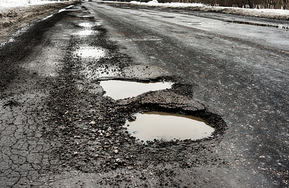 A pothole can do significant damage to your vehicle. One of the most common problems caused by potholes is damage to the tires. Potholes can cause punctures, tears, and even blowouts in tires. The impact can also cause sidewall damage, which can lead to the tire losing air pressure. Driving on a damaged tire can be dangerous, as it can lead to loss of control or a blowout, which can cause an accident.
A pothole can do significant damage to your vehicle. One of the most common problems caused by potholes is damage to the tires. Potholes can cause punctures, tears, and even blowouts in tires. The impact can also cause sidewall damage, which can lead to the tire losing air pressure. Driving on a damaged tire can be dangerous, as it can lead to loss of control or a blowout, which can cause an accident.
Damage to the Wheels of the Car
Another problem caused by potholes is damage to the wheels. The impact of hitting a pothole can cause the wheels to bend or crack. If left unchecked, this can cause the wheel to become misaligned, leading to further problems with the suspension and steering systems. Bent or cracked wheels should be replaced as soon as possible to prevent further damage and ensure safe driving.
Suspension system after hitting a Pothole
Pothole damage can also affect the suspension system of your car. The suspension system is responsible for absorbing shock and vibrations and keeping your car stable while driving. Potholes can cause the suspension system to become damaged, leading to a rough and uncomfortable ride, difficulty steering, and potentially dangerous driving conditions.
In addition to the suspension system, hitting a pothole can also damage the alignment of your car. Proper alignment ensures that your tires wear evenly and that your car handles well. Misaligned wheels can cause uneven wear on the tires, leading to the need for premature replacement. Misaligned wheels can also cause your car to pull to one side or the other while driving, which can be dangerous.
In conclusion, potholes can cause significant damage to your car, ranging from minor wear and tear to major mechanical issues. To avoid pothole damage, it is essential to drive carefully and be aware of your surroundings. If you suspect that your car has sustained damage from hitting a pothole, have it checked by a mechanic as soon as possible to ensure that it is safe to drive and to prevent further damage from occurring.
Winter Weather and the Challenge of Driving in it
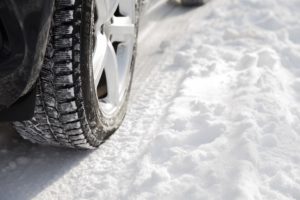 Winter weather can be a challenge to drive in. But there are steps you can take to stay safe on the roads. One of the most important things you can do is to make sure your vehicle is properly equipped for winter driving. This means ensuring that your tires are in good condition and have adequate tread, and that your windshield wipers, brakes, and other essential components are in good working order.
Winter weather can be a challenge to drive in. But there are steps you can take to stay safe on the roads. One of the most important things you can do is to make sure your vehicle is properly equipped for winter driving. This means ensuring that your tires are in good condition and have adequate tread, and that your windshield wipers, brakes, and other essential components are in good working order.
Winter Weather Driving
In addition to preparing your vehicle, it’s also important to adjust your driving habits to the conditions on the road. This may mean reducing your speed. Also leaving extra space between your vehicle and the one in front of you, and avoiding sudden movements or quick stops. It’s also a good idea to use your headlights and turn signals. This makes yourself more visible to other drivers.
When driving in the winter, it’s important to be aware of the weather conditions and adjust your plans accordingly. If the roads are particularly treacherous, it may be best to avoid driving altogether or to delay your trip until conditions improve. If you do need to drive, be sure to give yourself plenty of extra time to reach your destination. Also remember to check the weather and traffic reports before you set out.
Finally, it’s important to stay focused and alert when driving in the winter. This means avoiding distractions like your phone or the radio, and staying vigilant for hazards on the road. If you do start to feel fatigued or stressed, it’s important to take a break and rest before continuing your journey. By taking these precautions, you can reduce your risk of accidents and stay safe on the roads this winter. Also remember to schedule an appointment to ensure your vehicle is properly maintained. This will help your car be efficient and safe this winter.
Wheel Alignment Maintenance for your Car
 A wheel alignment is a crucial maintenance task that ensures your vehicle’s wheels are pointed in the correct direction and aligned with each other. This process involves adjusting the angles of the wheels to ensure that they are perpendicular to the ground and parallel to each other. A proper wheel alignment can help to improve your vehicle’s handling, stability, and fuel efficiency, while also extending the life of your tires.
A wheel alignment is a crucial maintenance task that ensures your vehicle’s wheels are pointed in the correct direction and aligned with each other. This process involves adjusting the angles of the wheels to ensure that they are perpendicular to the ground and parallel to each other. A proper wheel alignment can help to improve your vehicle’s handling, stability, and fuel efficiency, while also extending the life of your tires.
Signs you Need a Wheel Alignment
There are several signs that your vehicle may need a wheel alignment. If you notice that your vehicle is pulling to one side or the other, this could indicate that your wheels are out of alignment. You may also notice uneven wear on your tires or vibrations in your steering wheel. If you experience any of these symptoms, it is important to have a wheel alignment performed as soon as possible.
During a wheel alignment, a technician will use specialized equipment to measure the angles of your vehicle’s wheels. The three primary angles that are measured are camber, caster, and toe. Camber refers to the angle of the wheels when viewed from the front or rear of the vehicle. Caster is the angle of the steering axis when viewed from the side of the vehicle, and toe refers to the angle of the wheels when viewed from above or below the vehicle. The technician will adjust these angles as needed to ensure that your wheels are aligned correctly. They will also ensure that your wheels are centered within the wheel wells and that they are perpendicular to the ground. Once the adjustments are made, the technician will test your vehicle to ensure that it is driving straight and that there is no pulling to one side or the other.
Remember Regular Maintenance
An alignment is a critical maintenance task that should be performed regularly to ensure your vehicle is operating at its best. By having your wheels aligned, you can improve your vehicle’s handling, stability, and fuel efficiency while also extending the life of your tires. If you notice any signs that your vehicle may need a wheel alignment, be sure to schedule an appointment with a reputable auto shop as soon as possible.
Tires and Signs that there is a Problem with Them
 Tires can play a big role in your car’s performance, and they can also have a big impact on your safety. If you find yourself frequently encountering problems with your tires—whether they’re inflated too low, or they’re not wearing evenly—you may be at risk for poor tires. Here are some signs that you may have bad tires:
Tires can play a big role in your car’s performance, and they can also have a big impact on your safety. If you find yourself frequently encountering problems with your tires—whether they’re inflated too low, or they’re not wearing evenly—you may be at risk for poor tires. Here are some signs that you may have bad tires:
-Your car feels like it’s spinning when you try to accelerator
-It takes a lot more force to get the car moving than it used to
-Tires are constantly going flat
Tires that don’t perform can often be a sign that the vehicle is not as reliable as it should be. This can mean that the tires are not performing as they should, or that there is something wrong with them. In some cases, this may just be a need for an adjustment, while in other cases it may be something more serious. Anytime you notice something out of the norm, make sure to contact us.
What Causes Tires to Not Perform
The most common cause of tires not performing is due to wear and tear from use. This can include driving on uneven surfaces or hitting potholes during travel. If the tire starts to give way or make strange noises, you may want to contact us.
There are a few things you can do in order to fix a tire that doesn’t seem to be working correctly:
1) Check for any puncture marks or damage to the tires.
2) Check for air pressure – if there’s too much air in the tire, it might not allow it to grip onto road surface properly and start giving way under acceleration or braking forces.
3) Also check the tread wear of the tires.
If your tires don’t perform as they should, you may have to replace them. To do this, check the tire for defects such as air leaks and valve problems. Additionally, check the tire for balance and condition. If any of these conditions are found, you’ll need to replace it. When there is an issue, it is always best that you bring the vehicle in so we can inspect it for you. This can help you have a safe and reliable vehicle.
Winter Weather Driving and Staying Safe
 Winter weather driving can be tricky at times. No matter the time of the year, it’s important to be aware of your surroundings and make sure you are driving safe. Here are some tips for staying safe while driving in winter weather. Drive in a way that allows you to keep control of your vehicle. For example, drive slowly when driving in snowy conditions and use proper braking techniques.
Winter weather driving can be tricky at times. No matter the time of the year, it’s important to be aware of your surroundings and make sure you are driving safe. Here are some tips for staying safe while driving in winter weather. Drive in a way that allows you to keep control of your vehicle. For example, drive slowly when driving in snowy conditions and use proper braking techniques.
Use Proper Braking Techniques
When slowing down or stopping for traffic signals, use precision and attention to your surroundings. Also remember to start applying the brakes before you actually need to stop or turn. If it is slick out or snowing, you will need extra time for your car to stop. Make sure to gently apply the brakes. If the car does not slow down, you may need to pump the brakes in order to slow down.
How to Stay Safe Your Driving in Winter Weather
You always want to slow down when driving in the winter. During snow or high winds, the visibility will decrease. There is also a chance you will encounter black ice when driving. With black ice, you will not see it until it is too late. So always make sure to check the weather before you venture out on the roads. This way it can help you be prepared for any driving conditions you may encounter. Also remember to leave so you can allow yourself enough time to reach your destination safely. You will not be forced to speed or hurry while on the road.
Driving in winter weather can be dangerous and frustrating. Always leave enough space between you and the vehicle in front of you. Also remember to slow down when driving in less than ideal weather conditions. However, there are some helpful tips to keep you safe while on the road. In the end, remember to use caution and stay safe on the road.
Vehicle Maintenance: What You Need to Know!
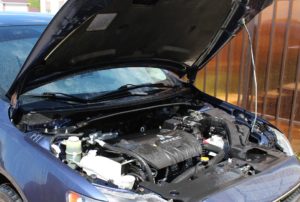 Vehicle maintenance is always needed. If you’re like most motorists, you probably take your vehicle for granted. It’s a reliable and affordable way to get around. But if you don’t take care of your car and truck, it can start to show its age. Here are some things you should know about vehicle maintenance:
Vehicle maintenance is always needed. If you’re like most motorists, you probably take your vehicle for granted. It’s a reliable and affordable way to get around. But if you don’t take care of your car and truck, it can start to show its age. Here are some things you should know about vehicle maintenance:
– Regular oil changes are essential to keep your car running smoothly and looking brand new
– A tire rotation is also a good idea when needed
– Wipers need attention too
Vehicle inspections are the process of keeping your car, truck, or SUV running smoothly and efficiently. It includes things such as oil changes, air conditioning, brakes, and tires. Vehicle maintenance can also include things like Tune-ups and emissions testing.
How to Get Started in Vehicle Maintenance
Vehicles need regular maintenance to function properly. In order to keep your car running smoothly and efficiently, follow the standard maintenance procedures. These procedures should be followed at least twice a year, depending on the type of vehicle and condition of the vehicle.
When it comes to maintaining your vehicle, following the standard procedures can help you achieve success. In particular, make sure to follow the manufacturer’s instructions and adjust your vehicle’s settings as needed. If you have any questions about maintenance or vehicle operation, contact us. By following these tips, you’ll be able to keep your car in top shape and save money on repairs.
Vehicle Maintenance is a important task that should be done on a regular basis to keep your vehicle running smoothly. By following the standard maintenance procedures, getting expert help if you have any questions. This can help keep your vehicle running at its best. Maintenance success is possible with the help of experienced drivers and drivers who know what they’re doing.
Tires and Keeping them in Great Condition
Tires are one of the most important items in your car. It is important to keep them in the best condition possible. If you need some help, here are some tips to help you out.
How to Keep Your tires in great condition
Before you start your trip, it’s important to inspect your tires. This will help you determine if they are in good condition and whether or not need to be replaced. Additionally, keeping your tires clean will ensure that they’ll perform at their best during your journey.
To inspect your tires, follow these steps:
Take a look at the tire tread. Check for any cracks, chips, or other problems. Also check the inflation pressure – make sure it’s consistent with the manufacturer’s specs. Check the tread depth – this number tells you how well the tire is holding up to wear and tear. Placing a penny upside down in the tread groove can easily determine if the tread is worn.
Tips for Keep Your Tires in Great Condition
To inspect your tires, use a Tire Pressure Checker. This tool will tell you the pressure of each tire and can help you identify any problems with them. If they are over inflated, they can pick up sharp objects more easily. If they are under inflated, then there is an increased chance they can blow out. Always make sure they are inflated to the proper amount. If you cannot find it, contact us and we can advise you on it.
Keeping your wheels in great condition can be a challenge. However, with the help of some common tips, it’s easy to keep them in top condition. By keeping your tire pressure in check and cleaning your tires regularly, you can keep them in good shape. Finally, tips for keeping your tires in great condition will help make sure that you have a smooth ride on the road.
Windshield Wipers & their Benefits: How to Choose the Right Ones for Your Vehicle
 Your windshield wipers are a critical part of your vehicle’s functionality and safety. But, which one is the right choice for you? Make sure that you look at the owner’s manual to ensure you get the correct size. If you are not sure, you can bring your vehicle in and we can advise you on the correct wipers for your car. Always be aware of any noises or sounds that the wipers might make. As they start to wear, they will make noises.
Your windshield wipers are a critical part of your vehicle’s functionality and safety. But, which one is the right choice for you? Make sure that you look at the owner’s manual to ensure you get the correct size. If you are not sure, you can bring your vehicle in and we can advise you on the correct wipers for your car. Always be aware of any noises or sounds that the wipers might make. As they start to wear, they will make noises.
What are the different types of windshield wipers
Wipers are essential for keeping your windshield clean and free of dirt, dust, and other debris. They come in a variety of designs and materials, so it’s important to choose the right type for your vehicle. Wipers work by using the friction of the wipers against the windshield. This action creates a current that is used to clean the glass. Also remember to check the windshield washer fluid. You will want this to be at the correct amount indicated on the reservoir. If it decreases a lot, make sure to bring it in so we can check for any leaks.
Remember to Inspect the Wipers
It is also important that you inspect the wipers on a regular basis. Sometimes, inspecting them can be as easy as just operating them. This is a good way to tell if they are vibrating against the windshield or not. As the wipers become old and brittle, they will chatter or leave streaks as they operate. Make sure to check the wiper, and blade to ensure everything is in the best condition. Even a small tear or rip out of it can cause issues as they run. Also make sure that the wipers clear away the precipitation without leaving any. This will help both your visibility and safety when you are driving.
Service Area
Minneapolis
St. Paul
Inver Grove Heights
Eagan
Cottage Grove
Woodbury
Mendota Heights
Maplewood
Contact Info
Working Hours
Monday-Friday: 7a.m. – 5p.m.
Saturday & Sunday: CLOSED





